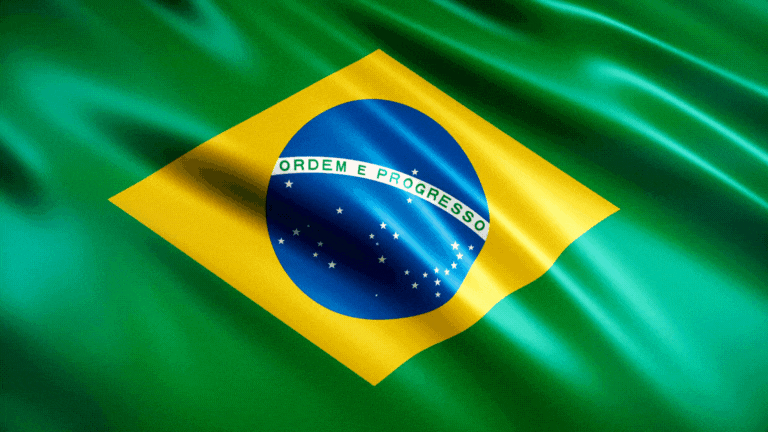Please be aware that this article may contain links to products and services we recommend. If you click on any of these links, we may earn a commission at no extra cost to you. We only endorse products and services that we believe will add value to our readers. Learn more here.
Brazil Flag: History & Symbolism
Hack The Quiz
5/8/20243 min read
This article explores the history and symbolism of the Brazil flag, highlighting Brazil’s geographical location in South America and how its vibrant flag design reflects the country’s natural resources, historical roots, and national motto.
Where is Brazil?
Brazil is the largest country in South America, sharing borders with nearly all other South American nations except Chile and Ecuador. It is also the fifth-largest country in the world by area and population. Stretching from the Amazon rainforest in the north to the vast Atlantic coast in the east, Brazil is known for its diverse ecosystems, including rainforests, savannahs, and wetlands.
Brazil was a Portuguese colony for over 300 years before gaining independence on September 7, 1822. The flag adopted in its current form reflects the country’s national pride, natural beauty, and its status as a major player on the world stage.
The History of the Brazil Flag
The current flag of Brazil was officially adopted on November 19, 1889, shortly after the country declared itself a republic and ended the Brazilian Empire. The design was inspired by the imperial flag of Brazil but made changes to reflect the new republican ideals.
The green and yellow background comes from the old imperial flag: green symbolized the House of Braganza of Emperor Pedro I, and yellow symbolized the House of Habsburg from Empress Maria Leopoldina, Pedro I’s wife. With the proclamation of the republic, a blue circle with white stars was added, along with the national motto, "Ordem e Progresso" ("Order and Progress").
This flag is a symbol of Brazil’s transition from a monarchy to a republic and its hopes for a prosperous future. It has since become an emblem of national pride, representing Brazil’s unity and its place on the world stage.
Breaking Down the Brazil Flag’s Design
The Brazilian flag is a colorful and complex design, featuring a green field, a yellow diamond, a blue globe, and 27 white stars. Each element of the flag carries symbolic meaning tied to Brazil’s history and its aspirations as a republic.
Let’s break down the elements of the flag:
The Green Field
The green background of the flag symbolizes Brazil’s lush forests, particularly the Amazon rainforest. It reflects the country’s vast natural resources and biodiversity.
The Yellow Dimond
The yellow diamond symbolizes the wealth of Brazil’s soil, especially its mineral resources, including gold. It is a nod to the country's rich natural deposits and its colonial history of mining.
The Blue Globe
The blue globe in the center represents the sky over Rio de Janeiro on November 15, 1889, the day the republic was declared. Inside the globe, the white stars represent the constellations visible from Rio on that day.
The National Motto
Written across the blue globe is Brazil’s national motto, "Ordem e Progresso" ("Order and Progress"). The motto reflects the positivist philosophy that inspired Brazil’s republican leaders, emphasizing the need for stability and development.
The Stars
The 27 stars on the flag correspond to the stars in the constellations of the southern sky, each star represents one of Brazil’s 26 states and its Federal District. The stars include the Southern Cross, one of the most recognizable constellations in the Southern Hemisphere.
Final Thoughts
The flag of Brazil is not only a colorful representation of the country but also a symbol of its rich natural resources, political transformation, and aspirations for progress. The green and yellow fields represent Brazil’s fertile lands and mineral wealth, while the blue globe and stars reflect the republic’s founding and unity of its states.
Since its adoption in 1889, the flag has become a symbol of national pride, flown during national holidays, sports events, and official ceremonies. Every time the flag is raised, it represents Brazil’s rich history and its ongoing journey toward progress and unity.
Expand your mind ...
Explore trivia that broadens your understanding and knowledge of the world.
WE ARE HERE FOR YOU
JOIN US and hack the quiz
info@hackthequiz.com
© 2024. All rights reserved.



